A Climate of Our Own Making
A Climate of Our Own Making
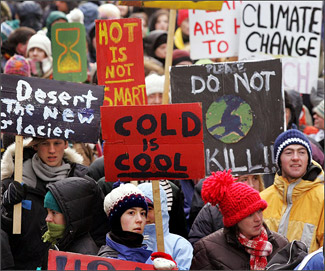
WASHINGTON: In the history of diplomacy, probably no international negotiation has received as much attention, and achieved as little, as the climate-change negotiations. Atmospheric concentrations of greenhouse gases have risen every year since negotiations began more than 15 years ago. They will go on rising even as the Kyoto Protocol is implemented. A new approach to negotiation is needed, but governments must also confront the reality of climate change. It is unlikely that concentrations will stabilize within the next several decades. Other kinds of international response are required.
The physics of climate change are simple. Gases that occur naturally in the atmosphere – primarily carbon dioxide and water vapor – trap the sun’s heat, mostly as it radiates back from the Earth, keeping the planet about 34° C warmer than it otherwise would be. This is the natural greenhouse effect. Human activity, at least since the industrial age, but probably since the invention of settled agriculture, has added to this concentration of gases. At the start of the industrial revolution, concentrations were about 280 parts per million (ppm). Today, they are around 380 ppm and will continue rising in the future.
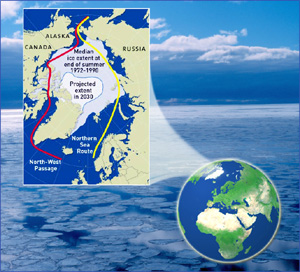
Higher concentrations are sure to warm the climate, but predicting climate change is difficult because of other changes, such as the Earth’s orbit about the sun. More maddeningly for climate modelers, rising concentrations may trigger other less predictable changes. One possibility is a weakening or even collapse of the Gulf Stream. Abrupt climate change has occurred in the past, and human activities could trigger more abrupt change.
Global mean temperature has increased about 0.6°C over the last century, but even if concentrations were stabilized today, the temperature would continue to rise because of a delayed thermal response. By 2100, mean global temperature is expected to rise by1.4 to 5.8 °C and sea level by 0.09 to 0.88 meters over this same period, as a result of thermal expansion and the melting of glaciers and ice caps. Of course, if concentrations continue unchecked, the climate will change still more.
The Framework Convention on Climate Change, negotiated in 1992, establishes the goal of stabilizing concentrations at a level that would prevent “dangerous anthropogenic interference with the climate system.” This would seem a sensible goal – who could favor dangerous interference with our one and only climate? However, the goal may not be the best way to approach the problem.
One reason is that limiting concentrations has a cost. Substantial reductions in greenhouse gas emissions within the next few decades would require a massive increase in nuclear power – the only viable source available now. In reducing one risk – climate change – the world would add another. The danger of an accident, a terrorist attack, coupled with the problem of nuclear waste disposal – all these risks would need to be borne.
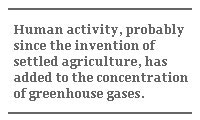
As well, we don’t know the concentration level that is “dangerous.” Thresholds undoubtedly exist, but we don’t know exactly where they exist. We only know that the probability of encountering a threshold increases with the concentration level. It is also essential to define “dangerous.” Climate change is unlikely to pose an existential threat to humanity. It won’t even result in massive loss of human life. Because the consequences of climate change are limited, the response is also likely to be limited. Hard choices must be made.
Expressing a goal in terms of concentrations implies that mitigation is what matters, but that is not true. Damages associated with climate change can also be reduced by adaptation.
The term “adaptation” is normally taken to include efforts like switching the crops that farmers grow or reinforcing the Thames Barrier to protect London from rising tides. But adaptation has many more implications.
The poorest countries are the most vulnerable to climate change – more so because of resource constraints than geographic vulnerability. For example, malaria spreading to new territories will result in a substantial loss in life. What should be done about it? One option would be to reduce greenhouse gas concentrations to limit this threat. Another, however, would be to invest in malaria control, including the prevention of resistance to anti-malarial drugs and the development of a vaccine. The latter investments would not only reduce the increase in malaria associated with climate change, but reduce the burden of malaria overall. These are the kinds of choices we must face.
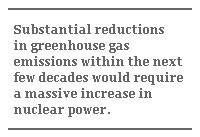
The world has taken some steps, but the Kyoto Protocol’s aspiration to reduce emissions is astonishingly modest. While stabilization of concentrations will eventually require a cut in global emissions of more than 50 percent, and further reductions beyond that, Kyoto asks only a small number of countries to reduce emissions by a small bit for a period of five years. Of course, Kyoto was only intended as a first step. But the problem is that Kyoto cannot sustain even the little that it sets out to achieve.
One challenge is convincing countries to participate in the agreement. The US, of course, dropped its support, and in a most undiplomatic manner. But the US decision is part of a general pattern. Developing countries, for example, have participated in great numbers, but only because Kyoto does not require them to reduce emissions.
Other nations will have difficulty complying with the agreement. An official Canadian document says that Canada’s emissions in 2010 will be about 45 percent above its revised Kyoto target, and the prime minister has already said that the nation will not meet its Kyoto limits.
Kyoto is an incremental treaty, and governments and researchers need to think of transforming the nature of technology worldwide. This will require substantial investment in R&D.
With luck, R&D might discover a “silver bullet” technology that produces energy at lower cost than fossil fuels. However, this seems unlikely. At the very least, R&D could reduce the costs of meeting the kinds of emission limits incorporated within Kyoto, but this would not make a material difference to the climate. R&D would have a more profound impact if the technologies developed were characterized by increasing returns, but no technology currently being considered displays this characteristic. Finally, a focus on technology may help overcome domestic political economy challenges for mitigation. Carbon-capture-and-storage has the disadvantage of being an add-on cost, but it also has a possibly important political economy advantage: It allows fossil fuels to be burned even while greenhouse gas emissions are cut.
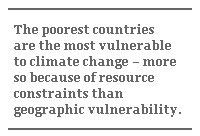
Rich countries will need to finance new technologies, but poor countries should be the priority markets. Countries like China and India are growing rapidly, and any investment underlying this new growth should be climate-friendly. Indeed, Kyoto got the design exactly wrong. It lets the poor countries grow like the rich countries and then transition onto a new development path when it would have been better to encourage the fast-growing poor countries to shift onto a new, more climate-friendly development path – financed by the rich countries – as a matter of urgency. The rich countries should move onto such a path more gradually as their own capital stock is retired.
This different approach requires government leadership in R&D, private-sector development of new technologies, and government leadership in creating markets for the new technologies worldwide. It will also require a North-South partnership for a new kind of global development. These are big ambitions, but modest proposals cannot address the challenge of climate change.
Scott Barrett is professor and director of the International Policy Program with
the Paul H. Nitze School of Advanced International Studies of Johns Hopkins University.
He wrote “Environment and Statecraft: The Strategy of Environmental Treaty-Making,” published by Oxford University Press.